Tests Comparing ThermaPANEL to PEX with Aluminum Plates
The above video illustrates that not all hydronic radiant snowmelt systems are created equal, and there is a good reason for that. There are two different categories of hydronic systems: tubing and modular panel systems. The application design parameters, desired performance, and ROI of the system will guide the decision-making process in terms of which type of system should be installed.
Pedestal Mounted Pavers
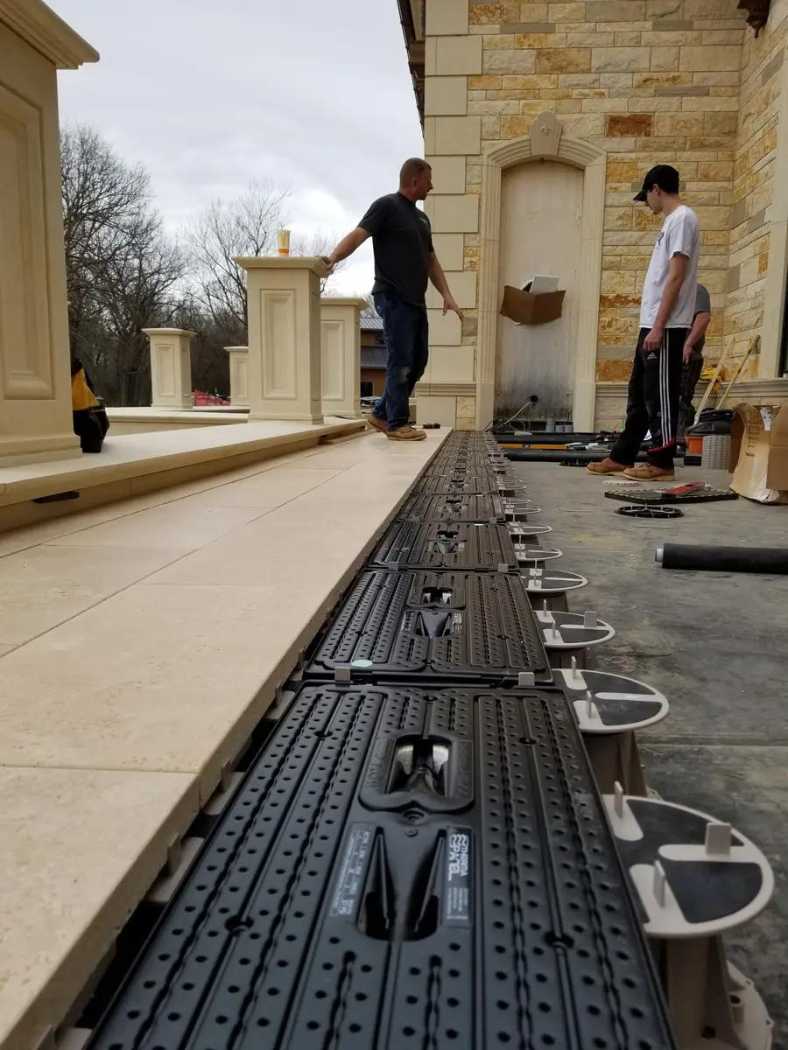
Private Residence – Wisconsin
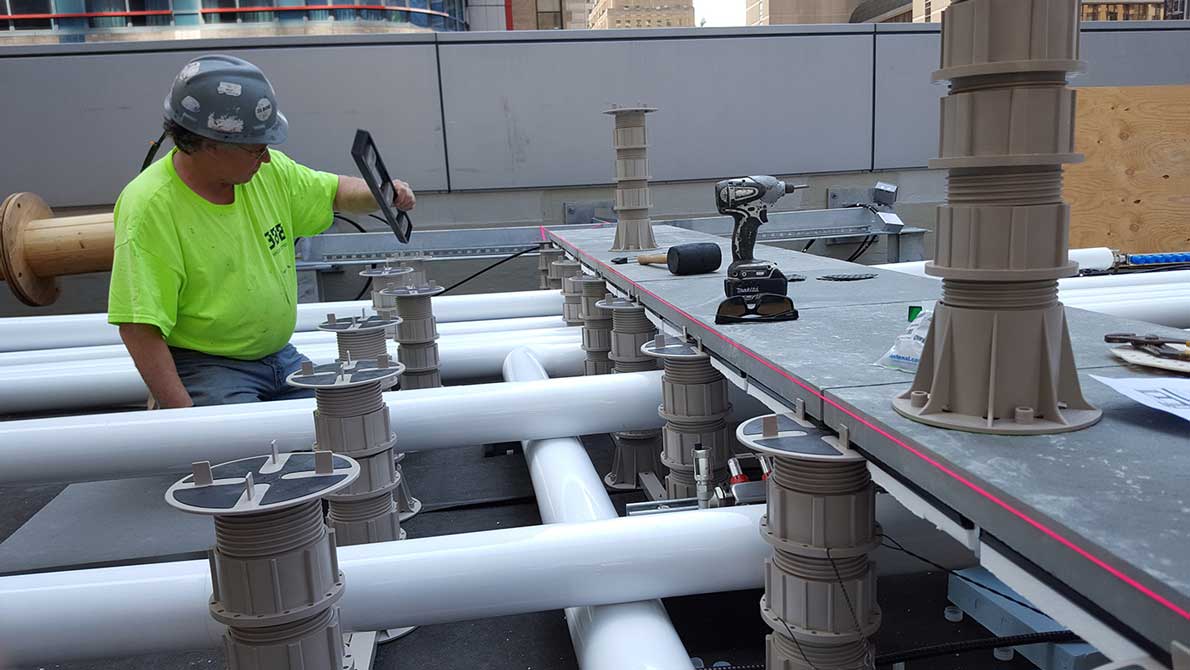
Marriott Edition Hotel – Times Square, NYC
Pedestal mounted pavers installed on ThermaPANEL systems
Therma-HEXX modular ThermaPANEL systems are engineered in-house for each project. The custom-built system is delivered directly to the installing contractor and a factory trainer is provided onsite for new contractor installations.
Pedestal mounted pavers are a unique challenge when it comes to heating and cooling. They are elevated above the substrate, with an airspace between the substrate and the bottom of the paver.
To properly heat or cool pedestal mounted or supported pavers, the hydronic radiant system is best served by a modular design that can integrate between the paver and pedestal while providing a low profile in order to fit in limited vertical spaces such as those found on most rooftop terraces while allowing for meltwater to flow to the drainage system and be able to prevent refreezing of the meltwater beneath the pavers. This is where the ThermaPANEL system is engineered to perfection. The system or assembly, consisting of the roof membrane, pedestals, pavers, and snowmelt system, also needs to be easily serviceable.

Private Residence – Chicago, IL
The 3/8″ thick ThermaPANEL units are thermoformed from PE-RT plastic, a fusion weldable polyethylene created by Dow for high-temperature fluids. They are factory fusion welded in rows up to 50′ long (25 panels) with S-shaped 1/2″ PE-RT tubes that allow for them to be adjusted for spacing in the field and to allow for them to be folded up into shippable boxes. They also come with 1″ EPS foam insulation bonded to the underside of the panels to direct most of the energy upward into the pavement. The exposed tubes and a portion of the panel underside is left uninsulated in order to provide heat into the airspace below. This small amount of heat keeps the melt runoff from freezing on the substrate as it flows to the drains. Each unit can easily be accessed and moved to access the substrate below if needed without disconnecting the units.
The Invisible Solar Collector
Solar Heating a pool

Private Residence – Southampton, NY
Pedestal mounted pavers can get very hot because they are decoupled from the substrate. The sun’s energy collects in the pavers and the surfaces can exceed 185 degrees F on a hot summer day. The ThermaPANEL system can perform as an invisible solar collector simply by connecting the system to a heat exchanger that can transfer the energy into a solar storage tank or swimming pool. In the winter, the pool heater can be used to snowmelt the patio. The residual heat in the pavers can heat the pools through the night.
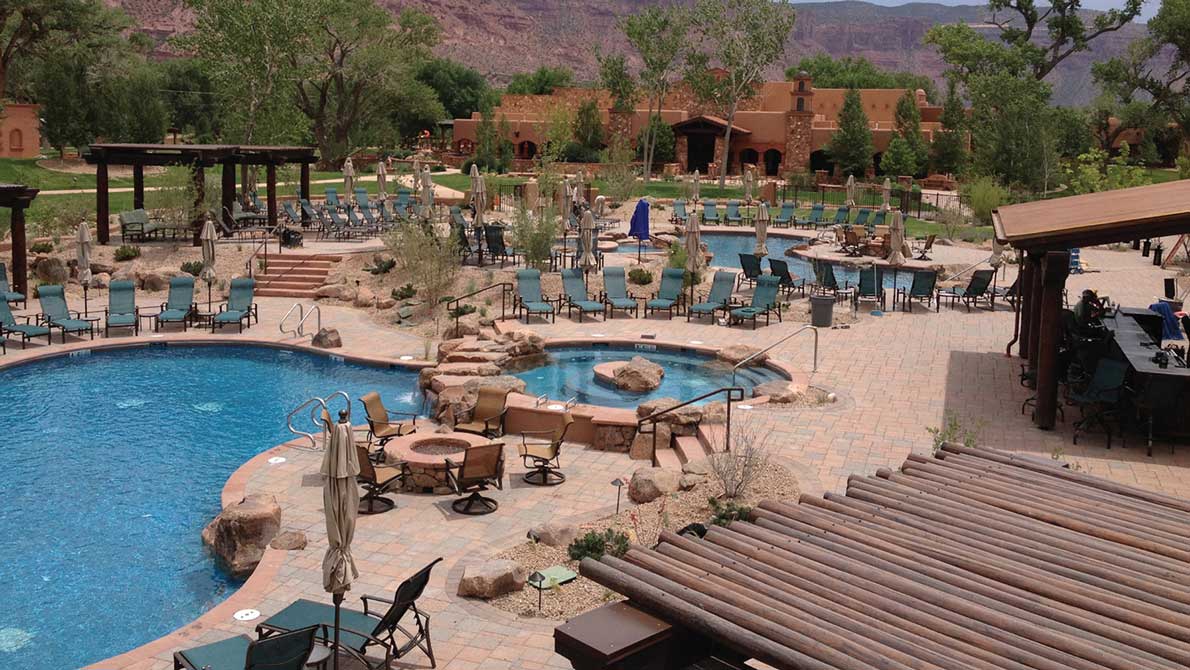
Gateway Canyons Resort – Gateway, CO
Wood and Composite Decks
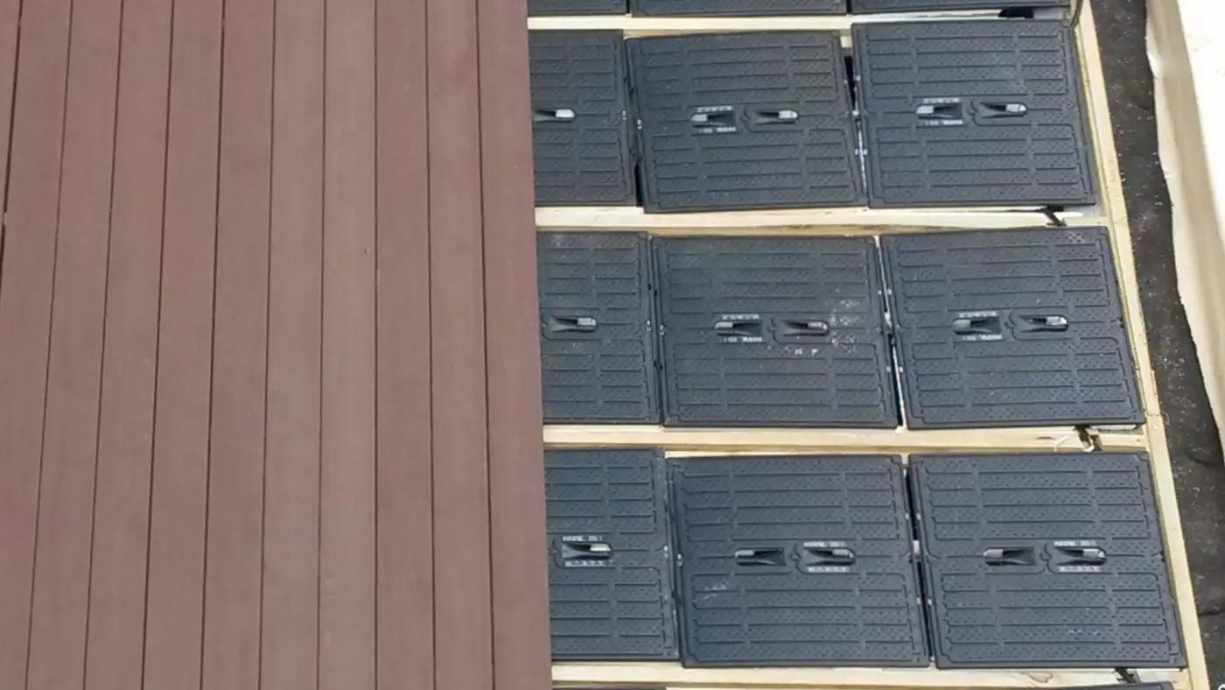
Beaumont Hospital – Michigan
Therma-HEXX will engineer deck joist layouts and installation details to accommodate the ThermaPANEL system in wood and composite decks.
Custom Engineered Stair Systems
Precast stairs, granite slab stairs and poured concrete stairs can all be snowmelted with a Therma-HEXX system. Each stair is engineered for panel placement and tube routing.
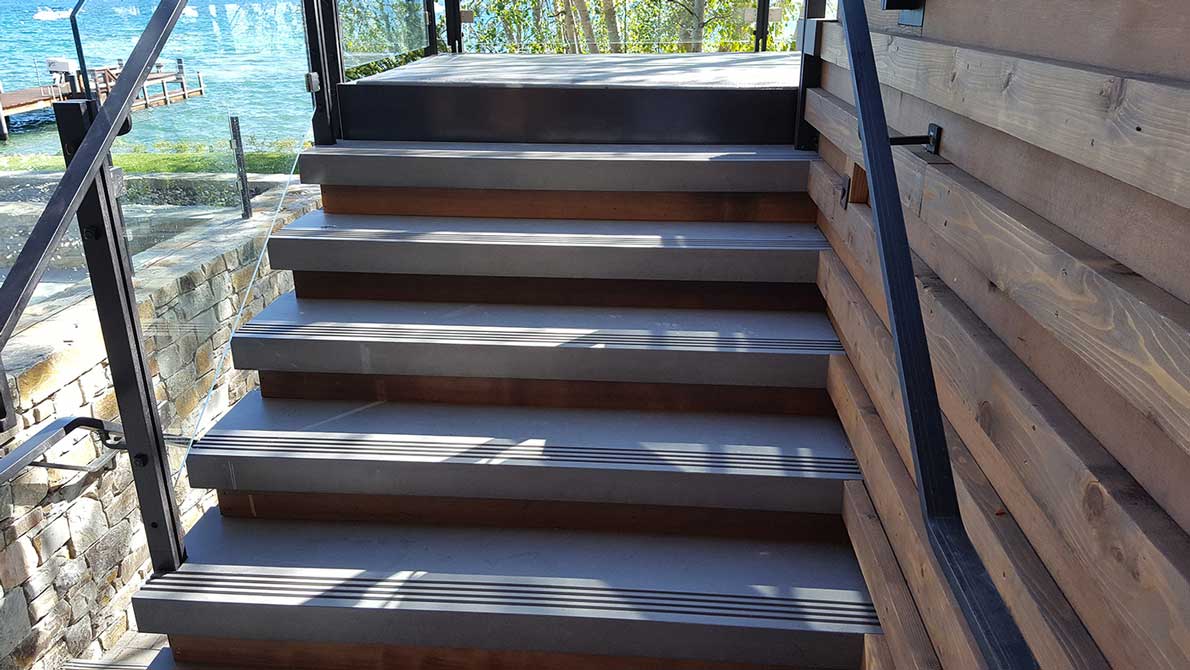
Ritz Carlton Club – Lake Tahoe, NV
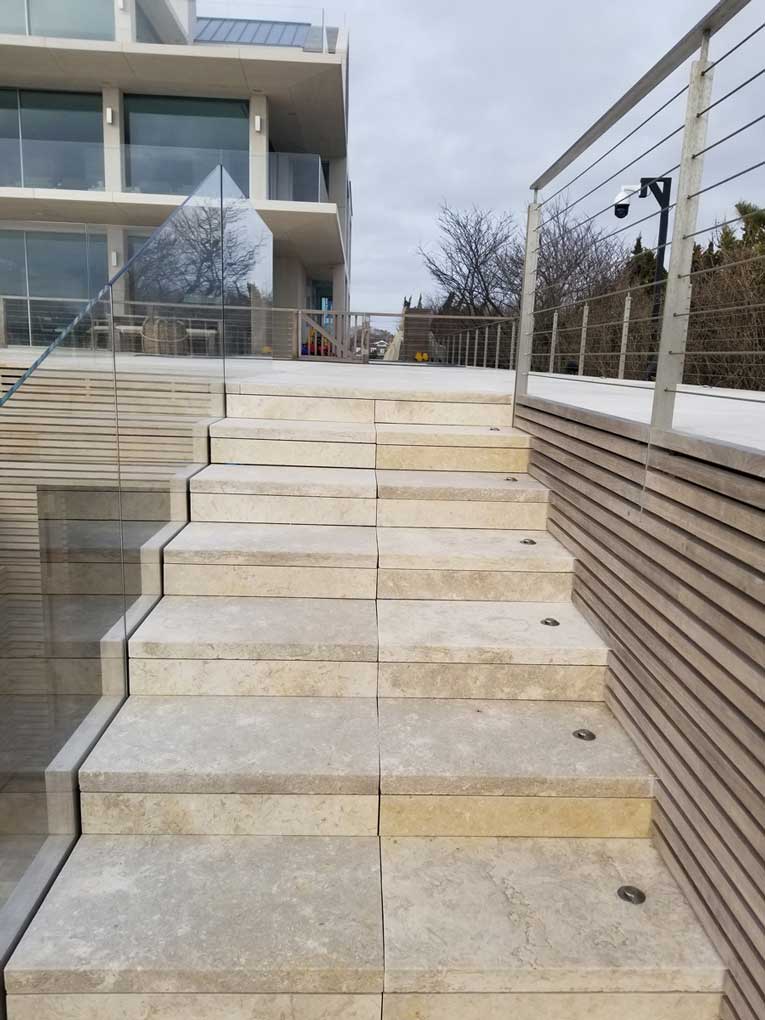
Private Residence – Southampton, NY
Custom Engineered Systems
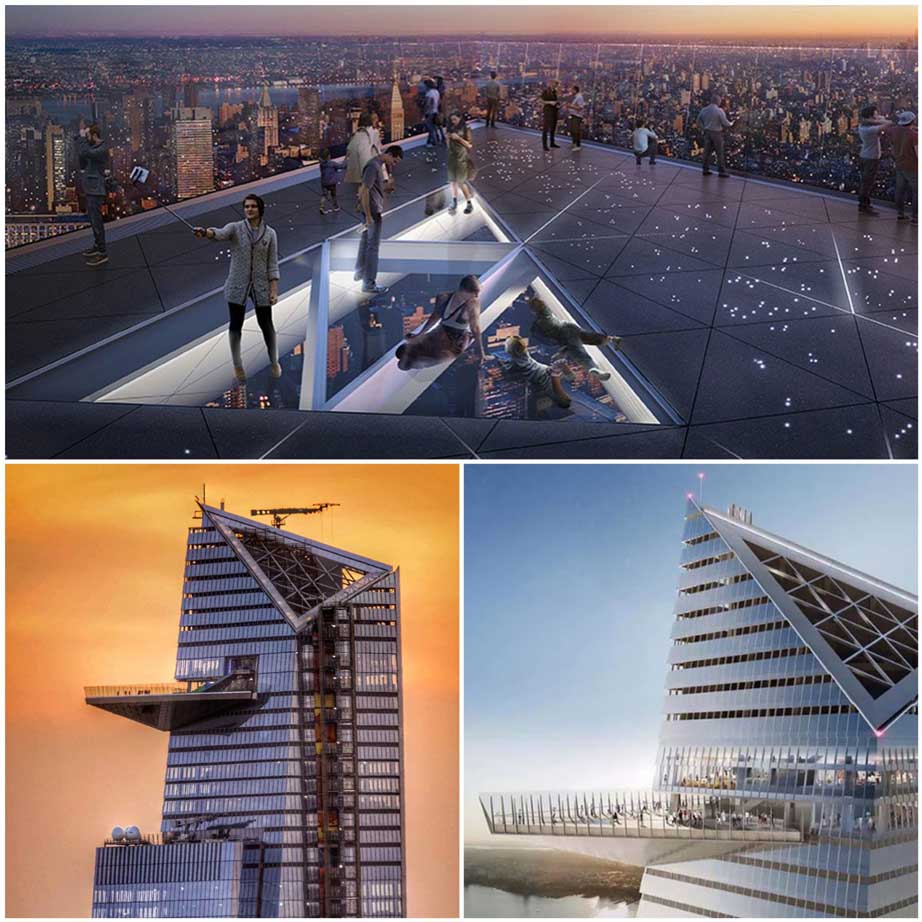
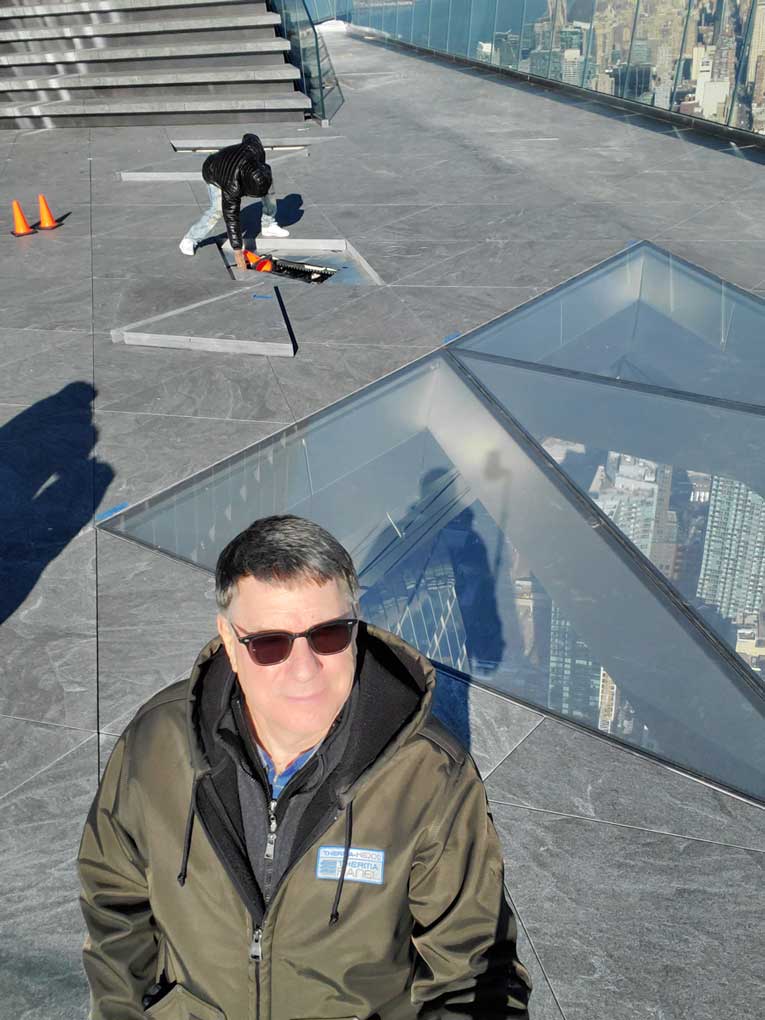
ThermaPANEL system on a hybrid permeable concrete perimeter, integrated with a lightweight composite grate and pedestal system on the interior sections
The Edge Observation Deck – Hudson Yards, NYC
Therma-HEXX engineers will custom design and engineer the entire system from the roof membrane up. We will take the architect’s requirements and create the appropriate solution as we did above for The Edge, the highest observation platform in the western hemisphere located at Hudson Yards, NYC.
To learn more about how ThermaPANEL systems work, and what our process looks like, check out these videos. If you are unfamiliar with pedestal-mounted pavers, we have a great reference post that will teach you, everything you need to know.
Segmented Pavers on a Compacted Base
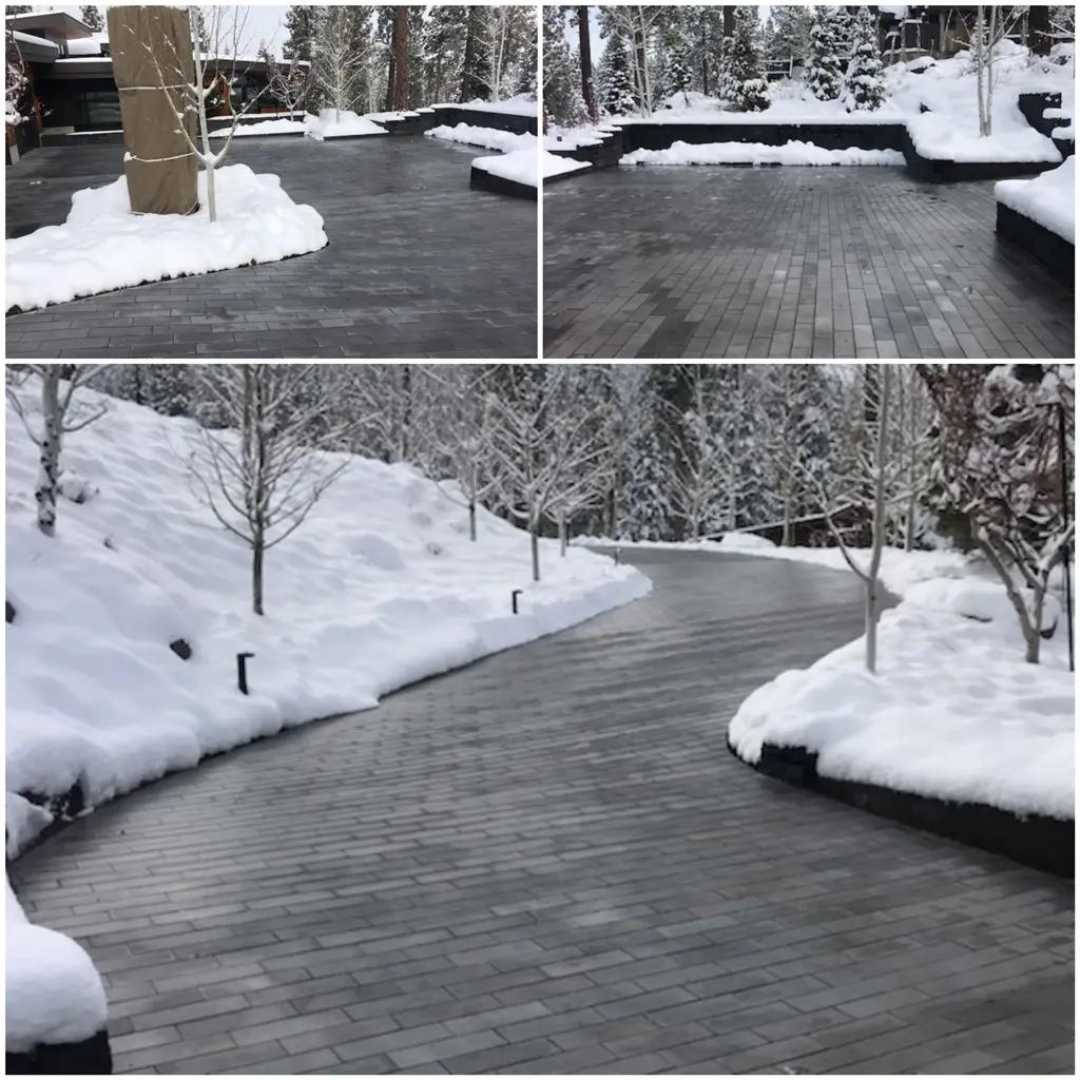
Private Residence – Truckee, CA
4″ thick Granite pavers ground mounted over a ThermaPANEL System
ThermaPANEL systems lay atop a compacted base and provide a solid sub-base for the pavers and bedding material. The amount of bedding material can be as little as 1/2″ and meets or betters ICPI guidelines. This can help prevent the pavers from settling over time causing ruts. Also, ThermaPANEL systems can withstand high compressive force so there is no need to worry about heavy vehicles crushing the system below the pavers. Therma-HEXX engineers each system while choosing from three different densities of insulation base material depending on the load requirements.
The typical ground mount assembly method for traditional PEX tubing snowmelting in a segmented paver system requires 2″ or more of bedding material which can lead to rutting and settling in the pavement and will void paver warranties as it exceeds the ICPI guidelines. It also requires the system to heat 2″ of bedding material before getting heat to the pavers.
Permeable Pavement
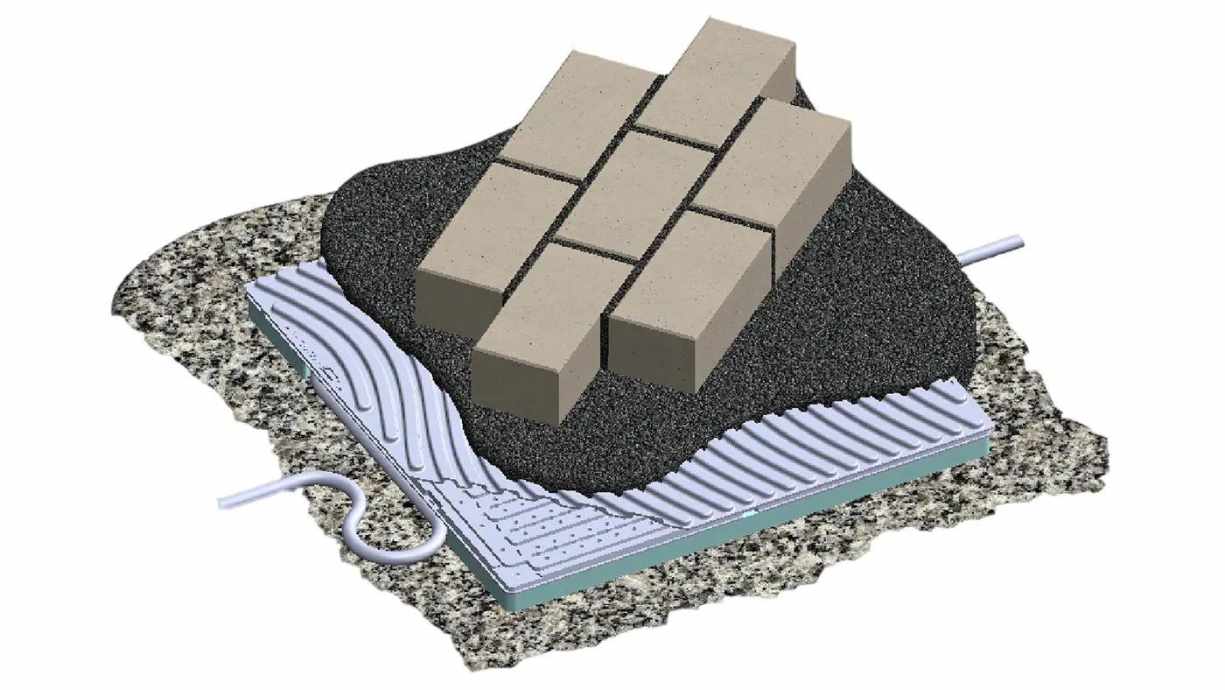
Permeable pavements are becoming a popular option and in some municipalities, they are required for driveways and walkways. This hardscape system allows water to return directly to the ground beneath the pavement instead of flowing to a drain or offsite. Permeability is created by using layers of different-sized stones as base and filler materials instead of gravel and sand. The stone, even when compacted, has voids that allow water to trickle back down into the ground below.
Tubing systems are not appropriate for permeable hardscapes. Their installation method is not compatible with permeable systems due to the risk of puncture. Furthermore, heat transfer through the coarse stone and into the surface would be hampered to efficiently melt snow.
A permeable ThermaPANEL system comes with a specially engineered protective top panel that prevents abrasion or punctures in the panel system. They also direct water flow to the permeable channels between the panel rows. The panels can be spaced apart beneath the surface allowing plenty of flow through to the substrate layers. Furthermore, the panels will transfer enough heat through the crushed 1/4″ minus bedding stone to melt snow.
Poured Concrete Slab and Asphalt
A ThermaPANEL system will heat a concrete slab or asphalt effectively and efficiently. The system covers the entire area beneath the pavement which allows for very fast, even heat up with no internal stresses from individual tubes placed in the concrete slab. However, we suggest that the system be installed beneath segmented pavement where possible so that any required maintenance to the pavement or system is easily managed. Therma-HEXX systems are designed to last many decades. A durable, flexible surface will provide the best ROI over time for the system as a whole.
Mechanical Components
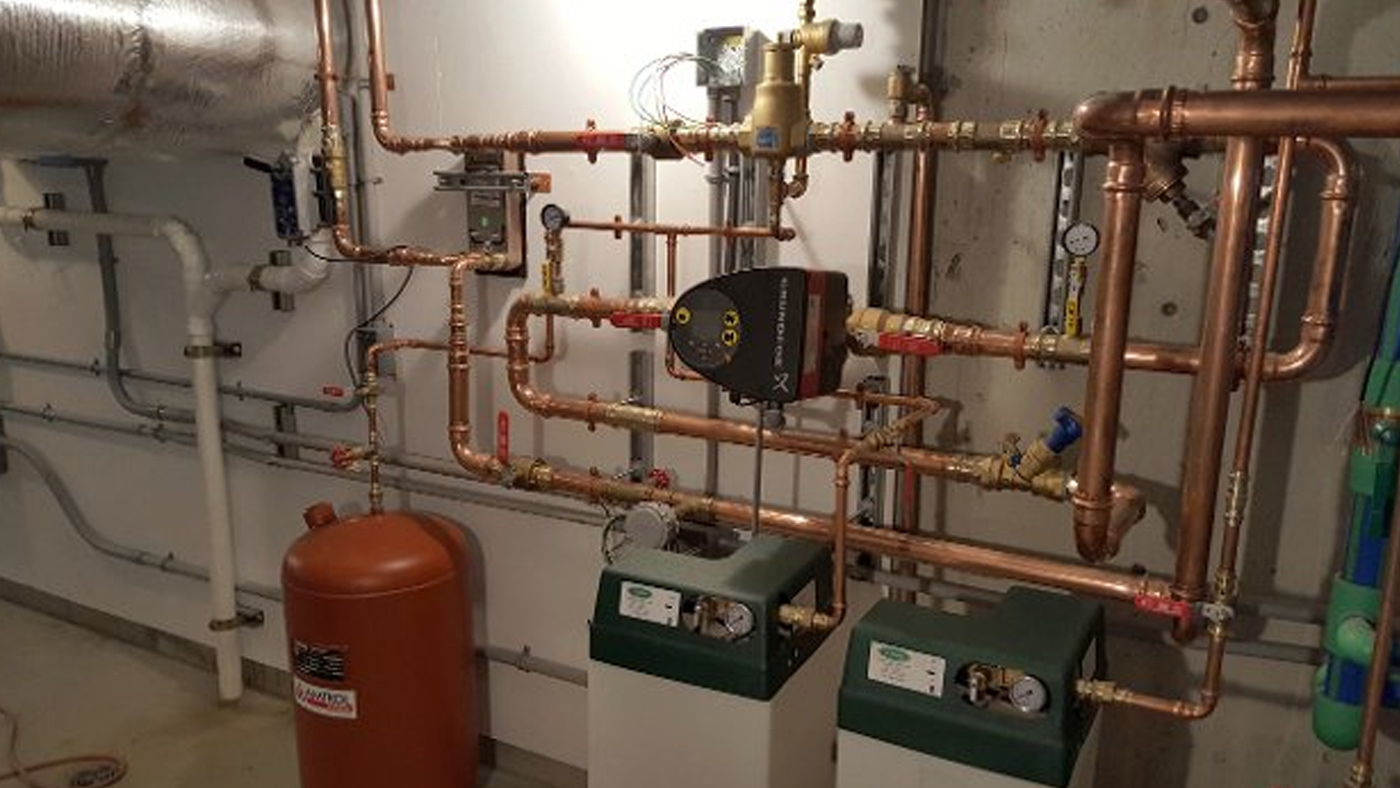
Snowmelt Mechanical Installation
Therma-HEXX and conventional PEX tube snowmelt systems have nearly the same requirements for the mechanical components. The only difference with a ThermaPANEL system would be in the type of circulator specified and a larger expansion tank.
Traditional PEX tube systems require a higher flow and lower head. The higher flow is required to create more energy transfer through the loops by introducing turbulence into the fluid flow which reduces the perimeter effect. The perimeter effect creates a dense layer at the interior surface of the tube and causes energy to stay within the center of the flow path thus reducing energy flow to the pipe wall. By eliminating laminar flow, higher energy transfer is created, but this only works for the flow at the beginning of the tube loop. Traditional tube-based systems require that they be installed in some type of mass to transfer the energy from the tube wall to the mass and subsequently to the surface of the mass. This typically is accomplished with a concrete slab of at least 4″ thickness. Some municipal energy codes require that the slab be insulated so that all of the energy goes to the surface and not the substrate. What makes a snowmelt system efficient, is the time it takes to heat the surface and transform the snow to a liquid of vapor as well as the energy required to accomplish that task. A ThermaPANEL system far outperforms any tube-type system as shown in the above video.
ThermaPANEL systems are engineered and specified with efficient circulators that have higher head and lower comparative flow than tube-based systems. ThermaPANEL units are designed to provide even, high performance, energy transfer as the primary feature. To eliminate the perimeter effect seen in tubing, tubulating stanchions are formed into each channel of the panels to create turbulent flow and to add 20% additional surface area to the flow channels. The efficiency is further enhanced by the 98% coverage of the area to be heated. This also eliminates the possibility of cracking in the concrete by uneven heating and the tubes expanding and contracting within a slab.
A glycol feeder is required for all ThermaPANEL systems. During setup and operation, entrained air slowly works its way out of the system via the air eliminator. Having a glycol feeder ensures that glycol is introduced into the loop as and air is eliminated. Furthermore, if for any reason the pressure in the systems rises above the specified operating pressure, a pressure relief valve will blow off into the feeder, collecting the expelled glycol until the system cools down. The glycol is then automatically pumped back into the system to maintain the correct system pressure.
A low-pressure switch is also required. Should the glycol feeder run dry due to a leak or other cause, the system will shut off to protect the pump and reduce the amount of glycol lost. It can be set to sound an alarm at which time the cause can be corrected and proper glycol added into the system.
Automatic freshwater feeds should never be installed on a snowmelt system as they will dilute the glycol and cause a freeze-up and likely destroy the entire system. ThermaPANEL units are very resistant to fracture from freezing due to the low fluid/ channel cross-section ratio whereas tubing is more vulnerable.
Contact us today and we will work with you to understand exactly what you need and how we can help.
